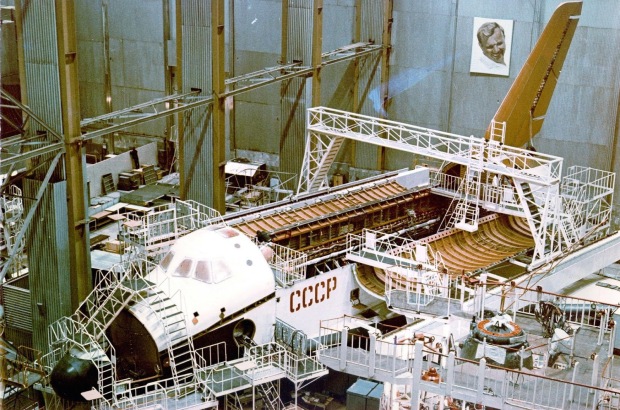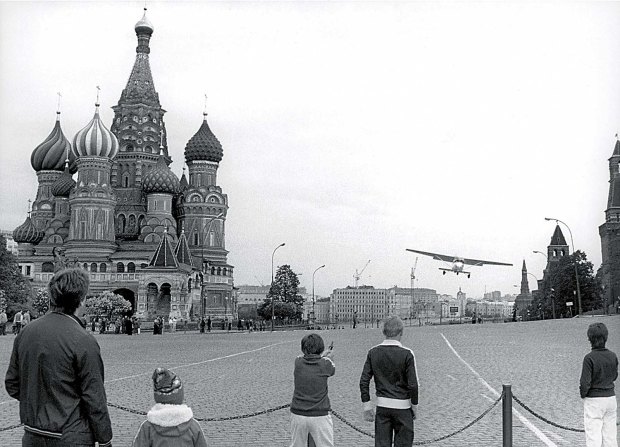
During the Cold War, the USSR built a look-alike space shuttle to compete with the U.S. program.
The development of the “Buran” began in the early 1970s as a response to the U.S. Space Shuttle program. Soviet officials were concerned about a perceived military threat posed by the U.S. Space Shuttle.

In their opinion, the Shuttle’s 30-ton payload-to-orbit capacity and, more significantly, its 15-ton payload return capacity, were a clear indication that one of its main objectives would be to place massive experimental laser weapons into orbit that could destroy enemy missiles from a distance of several thousands of kilometers. Their reasoning was that such weapons could only be effectively tested in actual space conditions and that to cut their development time and save costs it would be necessary to regularly bring them back to Earth for modifications and fine-tuning.[7] Soviet officials were also concerned that the U.S. Space Shuttle could make a sudden dive into the atmosphere to drop bombs on Moscow.

The construction of the Buran-class space shuttle orbiters began in 1980, and by 1984 the first full-scale orbiter was rolled out. Construction of a second orbiter (OK-1K2, informally known as Ptichka) started in 1988. The Buran programme ended in 1993.

The first launch attempt on October 29, 1988, ended with a mechanical failure; a platform next to the rocket took so long to retract that the rocket’s computer cancelled the countdown.
The only orbital launch of a Buran-class orbiter occurred at 03:00:02 UTC on 15 November 1988 from Baikonur Cosmodrome launch pad 110/37.Buran was lifted into space, on an unmanned mission, by the specially designed Energia rocket. The automated launch sequence performed as specified, and the Energia rocket lifted the vehicle into a temporary orbit before the orbiter separated as programmed. After boosting itself to a higher orbit and completing two orbits around the Earth, the ODU engines fired automatically to begin the descent into the atmosphere, return to the launch site, and horizontal landing on a runway.
lifted into space, on an unmanned mission, by the specially designed Energia rocket. The automated launch sequence performed as specified, and the Energia rocket lifted the vehicle into a temporary orbit before the orbiter separated as programmed. After boosting itself to a higher orbit and completing two orbits around the Earth, the ODU engines fired automatically to begin the descent into the atmosphere, return to the launch site, and horizontal landing on a runway.
After making an automated approach to Site 251 (known as Yubileyniy Airfield), Buran touched down under its own control at 06:24:42 UTC and came to a stop at 06:25:24, 206 minutes after launch.
In 1989, it was projected that OK-1K1 would have an unmanned second flight by 1993, with a duration of 15–20 days. Although the Buran programme was never officially cancelled, the dissolution of the Soviet Union led to funding drying up and this never took place.


Donation
I am passionate about my site and I know you all like reading my blogs. I have been doing this at no cost and will continue to do so. All I ask is for a voluntary donation of $2, however if you are not in a position to do so I can fully understand, maybe next time then. Thank you. To donate click on the credit/debit card icon of the card you will use. If you want to donate more then $2 just add a higher number in the box left from the PayPal link. Many thanks.
$2.00








You must be logged in to post a comment.